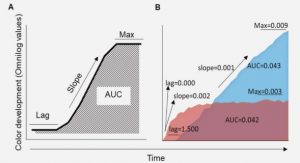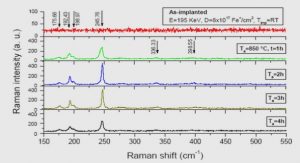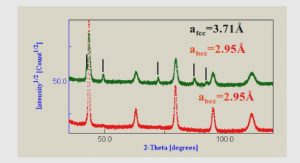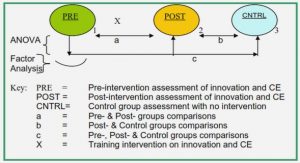Get Complete Project Material File(s) Now! »
Data collection
Data for the qualitative component of the study were collected using individual in-depth interview of students. A Digital audio recorder was used to capture the whole interview of each of the 26 participants. The investigator also took notes on relevant issues as the interview proceeded. Seidman (1998) defines in-depth interview as a qualitative data collection method that enables to understand and explore one’s experience and the meaning one makes of that experience. In-depth interview is used to uncover feelings and beliefs an individual has regarding a specific experience. Open ended questions are asked on issues ranging from specific to general topic of interest. In-depth interviews can be used to explore in complex topics; when subjects are knowledgeable about the issue and when an understanding of individual experience is needed (Cottrell & McKenzie 2011). As explained by Kvale (1996), knowledge is created as a result of the interaction between interviewer and interviewee.
Development and testing of the HIV testing Belief Scale (HTBS)
The development of HTBS addresses ‘objective 1’ of the study. Development of a scale involved step by step procedures and processes (Williams, Brown & Onsman 2010; Barry, Chaney, Stellefson & Chaney 2011). According to DeVellis (2003), there are three main steps in developing a scale. The first step is to clearly define what is going to be measured. The second step is to generate an item pool and finally followed by determining format for measurement. In relevant to this study, Zagumny & Brady(1998:174) followed two phases in order to develop AIDS Health Belief Scale(AHBS). The first phase was item development and item analysis which was followed by reliability and factor analysis of the scale.
Theoretical definitions
The first step in the development of a scale is to clearly define what is going to be measured in the context of the proposed theory or model. A theoretical definition is defined as the meaning of the concept or construct as given by substituting other words or phrases for it and this is usually taken from the theoretician who first defined the terms. DeVellis (2003) puts the relationship between theory and measurement as follows: “The phenomenon we try to measure in social science research often derive from theory. Consequently, theory plays a key role in how we conceptualise our measurement problems. Of course many areas of science measure things derived from theory”.
Measurement
Kerlinger (1986) defines measurement as the process of assigning numbers or levels to objects, events, or people according to a particular set of rules. The focus of measurement in research is variables. Cottrell and McKenzie (2011) define variables as a characteristic or attribute of an individual or an organisation that can be measured or observed by the researcher and varies among individuals or organisations studied. In health behaviour and education research, measurement of variables is a key issue to achieve the objective of a study. Measurement helps convert variables into empirical indicators − the actual instruments used to measure concepts or constructs (Di lorio 2005). Di lorio (2005) puts the procedures to develop a measurement instrument as: begins understanding of the concept to be measured; writing items; stating the rules for using the scale; devising scoring methods and finally assigning a numeric score corresponding to the type of conceptual dimension or the amount (quantity) of the variable.
Operational definitions
Although theoretical definitions can provide us the generic definitions of the constructs as defined conceptually, they don’t provide us the definition as used in specific studies. The process of transforming concepts or constructs in to measurable variables is called operational definition. For this study, the term scale rather than survey questionnaire was used as it is mostly referred as such in measurement field. A scale as defined for this study was an instrument that is used to measure the six constructs of the HBM and HIV testing intentions. Under each construct, items that can explain or represent the construct were indicated. Measurement scale is defined as measurement instruments that are collections of items combined into a composite score and intended to show levels of theoretical variables not explicitly observable by direct means (DeVeliis 2003). Since it was difficult to measure variables or constructs directly, scales with various items under each construct were used as a proxy measurement. The following paragraphs describes items included in the initial items pool and operational definitions as it corresponds to each of the constructs as indicated below in Table .
Table of Contents :
- CHAPTER ORIENTATION TO THE STUDY
- 1.1 INTRODUCTION
- 1.2 BACKGROUND INFORMATION ABOUT THE RESEARCH PROBLEM
- 1.2.1 The source of the research problem
- 1.2.2 Background to the research problem
- 1.3 RESEARCH PROBLEM
- 1.4 AIM OF THE STUDY
- 1.4.1 Research purpose
- 1.4.2 Research objectives
- 1.5 SIGNIFICANCE OF THE STUDY
- 1.6 DEFINITIONS OF TERMS
- 1.7 FOUNDATIONS OF THE STUDY
- 1.7.1 Meta-theoretical assumptions
- 1.7.2 Theoretical framework
- 1.8 RESEARCH DESIGN AND METHOD
- 1.9 SCOPE OF THE STUDY
- 1.10 STRUCTURE OF THE THESIS
- 1.11 CONCULUSION
- CHAPTER LITERATURE REVIEW
- 2.1 INTRODUCTION
- 2.2 THE BASICS OF HIV/AIDS
- 2.2.1 History and epidemiology
- 2.2.2 Pathogenesis of HIV
- 2.2.3 Transmission
- 2.2.4 Natural history
- 2.2.5 Diagnosis and management of HIV/AIDS
- 2.3 HIV/AIDS IN ETHIOPIA
- 2.4 HIV TESTING AND COUNSELING (HTC)
- 2.4.1 History, purpose and modes of HTC
- 2.4.2 HTC procedures
- 2.4.3 Coverage of HTC
- 2.4.4 HTC in Ethiopia
- 2.5 THE HEALTH BELIEF MODEL
- 2.5.1 Origin and background
- 2.5.2 Constructs of HBM
- 2.5.2.1 Perceived susceptibility
- 2.5.2.2 Perceived severity
- 2.5.2.3 Perceived benefit
- 2.5.2.4 Perceived barriers
- 2.5.2.5 Cues to action
- 2.5.2.6 Perceived self-efficacy
- 2.5.3 Other variables
- 2.6 APPLICATIONS OF HEALTH BELIEF MODEL (HBM)
- 2.6.1 The role of health belief model to predict and explain HIV/AIDS related behaviours
- 2.6.2 Perceived susceptibility
- 2.6.3 Perceived severity
- 2.6.4 Perceived benefit
- 2.6.5 Perceived barriers
- 2.6.6 Perceived self-efficacy
- 2.6.7 Cues to action
- 2.7 CONCULUSION
- CHAPTER RESEARCH DESIGN AND METHODS
- 3.1 INTRODUCTION
- 3.2 RESEARCH DESIGN
- 3.3 RESEARCH METHOD
- 3.3.1 Phase I: Exploratory qualitative study (In-depth interview)
- 3.3.1.1 Aim and questions addressed in the qualitative study
- 3.3.1.2 Sampling
- 3.3.1.2.1 Population
- 3.3.1.2.2 Sampling
- 3.3.1.3 Data collection
- 3.3.1.3.1 Data collection approach and methods
- 3.3.1.3.2 Development of questions and interview guides
- 3.3.1.3.3 Interviewing and recording of voices
- 3.3.1.4 Ethical considerations for the in-depth interview
- 3.3.1.4.1 Protecting the rights of the study participants
- 3.3.1.4.2 Protecting the rights of the institution
- 3.3.1.4.3 Scientific integrity of the researcher
- 3.3.2 Phase II: Development and testing of the HIV testing Belief Scale (HTBS)
- 3.3.2.1 Theoretical definitions
- 3.3.2.2 Measurement
- 3.3.2.3 Generating items pool
- 3.3.2.4 Operational definitions
- 3.3.2.5 Final item pool content validity assessment by experts
- 3.3.2.6 Scale translation
- 3.3.2.7 Pilot survey: Item administration to a development sample
- 3.3.2.7.1 Sample size and sampling procedure
- 3.3.2.7.2 Data collection process
- 3.3.2.7.3 Ethical considerations
- 3.3.3 Phase III: Cross-sectional survey
- 3.3.3.1 Variables of the study
- 3.3.3.2 Sampling
- 3.3.3.2.1 Population
- 3.3.3.2.2 Sample and sampling procedure
- 3.3.3.2.3 Inclusion and exclusion criteria
- 3.3.3.2.4 Ethical issues related to sampling
- 3.3.3.3 Data collection
- 3.3.3.3.1 Data collection approach and method
- 3.3.3.3.2 Ethical considerations related to data collection
- 3.3.3.3.3 Data analysis
- 3.4 INTERNAL AND EXTERNAL VALIDITY OF THE STUDY
- 3.4.1 Phase I: Qualitative study – in-depth interview
- 3.4.2 Phases II and III: Development of HTBS and cross-sectional survey
- 3.5 CONCULUSION
- CHAPTER ANALYSIS, PRESENTATION AND DESCRIPTION OF THE FINDINGS OF THE INDEPTH INTERVIEW
- 4.1 INTRODUCTION
- 4.2 DATA MANAGEMENT AND ANALYSIS
- 4.3 IN-DEPTH INTERVIEW RESULTS
- 4.3.1 Characteristics of in-depth interview participants
- 4.3.2 Main findings of the in-depth interview
- 4.3.2.1 General knowledge about HIV/AIDS
- 4.3.2.2 Perceived severity
- 4.3.2.3 Perceived susceptibility
- 4.3.2.4 Perceived benefit
- 4.3.2.5 Perceived barrier
- 4.3.2.6 Perceived self-efficacy
- 4.3.2.7 Cues to action
- 4.4 CONCULUSION
- CHAPTER ANALYSIS, PRESENTATION AND DESCRIPTION OF THE FINDINGS OF THE PILOT SURVEY FOR THE DEVELOPMENT OF HTBS
- 5.1 INTRODUCTION
- 5.2 DATA MANAGEMENT AND ANALYSIS
- 5.3 RESULTS OF THE PILOTING SURVEY
- 5.3.1 Socio-demographic characteristics of the sample
- 5.3.2 Reliability assessment and item analysis
- 5.3.3 Exploratory factor analysis
- 5.3.4 Item retention and deletion
- 5.3.4.1 Perceived susceptibility
- 5.3.4.2 Perceived severity
- 5.3.4.3 Perceived barrier
- 5.3.4.4 Perceived benefit
- 5.3.4.5 Perceived self-efficacy
- 5.3.4.6 Cues to action
- 5.3.5 The final HTBS after the piloting study
- 5.4 CONCULUSION
- CHAPTER ANALYSIS, PRESENTATION AND DESCRIPTION OF THE FINDINGS OF THE CONFIRMATORY FACTOR ANALYSIS
- 6.1 INTRODUCTION
- 6.2 DATA MANAGEMENT AND ANALYSIS
- 6.3 RESEARCH RESULTS
- 6.3.1 Socio-demographic characteristics of the sample
- 6.3.2 Reliability assessment and item analysis
- 6.3.3 Structural Equation Modeling (SEM): Confirmatory factor analysis
- 6.3.3.1 Model specification
- 6.3.3.2 Model identification
- 6.3.3.3 Model estimation
- 6.3.3.4 Testing model fit
- 6.3.3.5 Initial test of the CFA model and model modifications
- 6.3.3.5.1 Perceived susceptibility
- 6.3.3.5.2 Perceived severity
- 6.3.3.5.3 Perceived benefit
- 6.3.3.5.4 Perceived barrier
- 6.3.3.5.5 Perceived self-efficacy
- 6.3.3.5.6 Cues to action
- 6.3.3.5.7 HIV testing intention
- 6.4 CONCULUSION
GET THE COMPLETE PROJECT
DEVELOPMENT OF HIV TESTING BELIEF SCALE (HTBS) AND APPLICATION OF HEALTH BELIEF MODEL (HBM) TO PREDICT HIV TESTING INTENTION AND BEHAVIOUR AMONG UNIVERSITY STUDENTS IN ETHIOPIA






